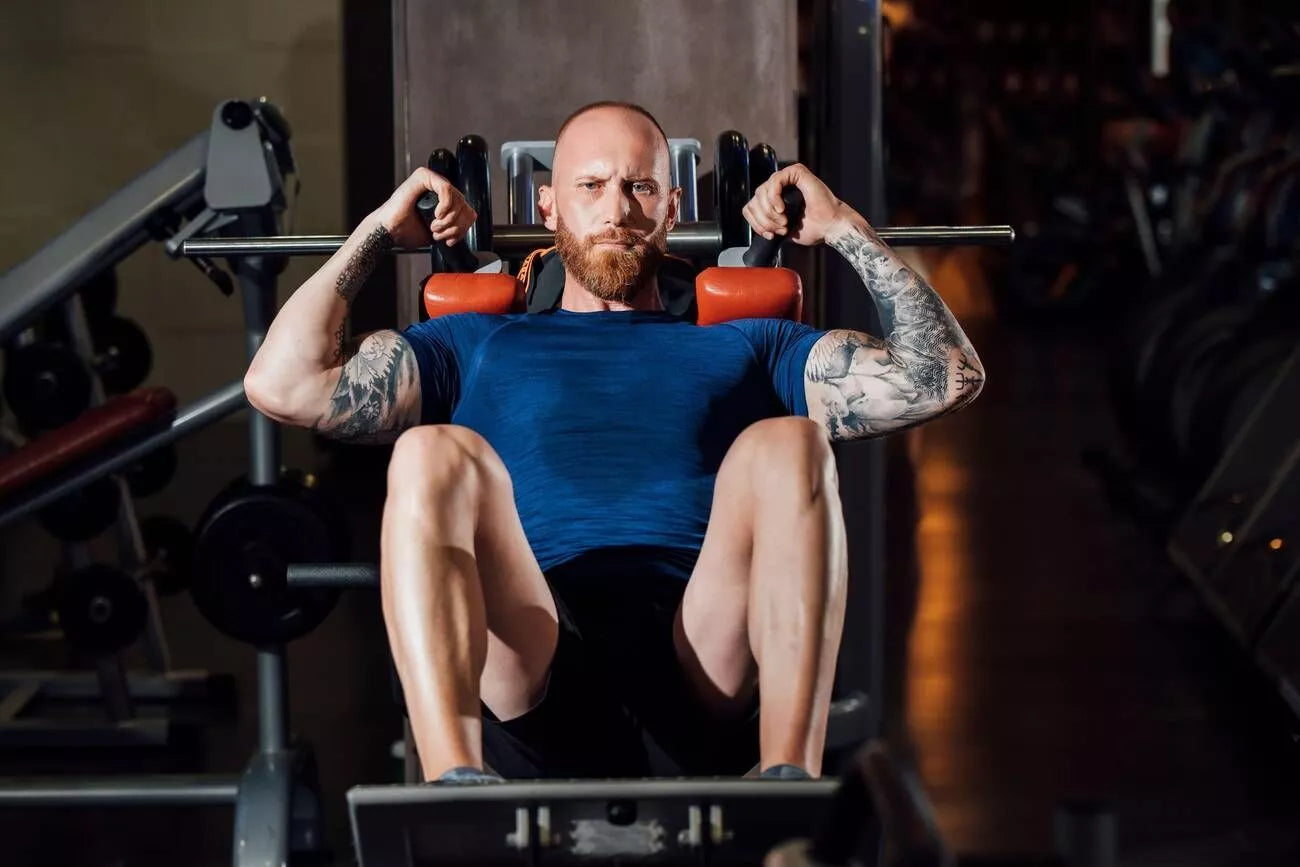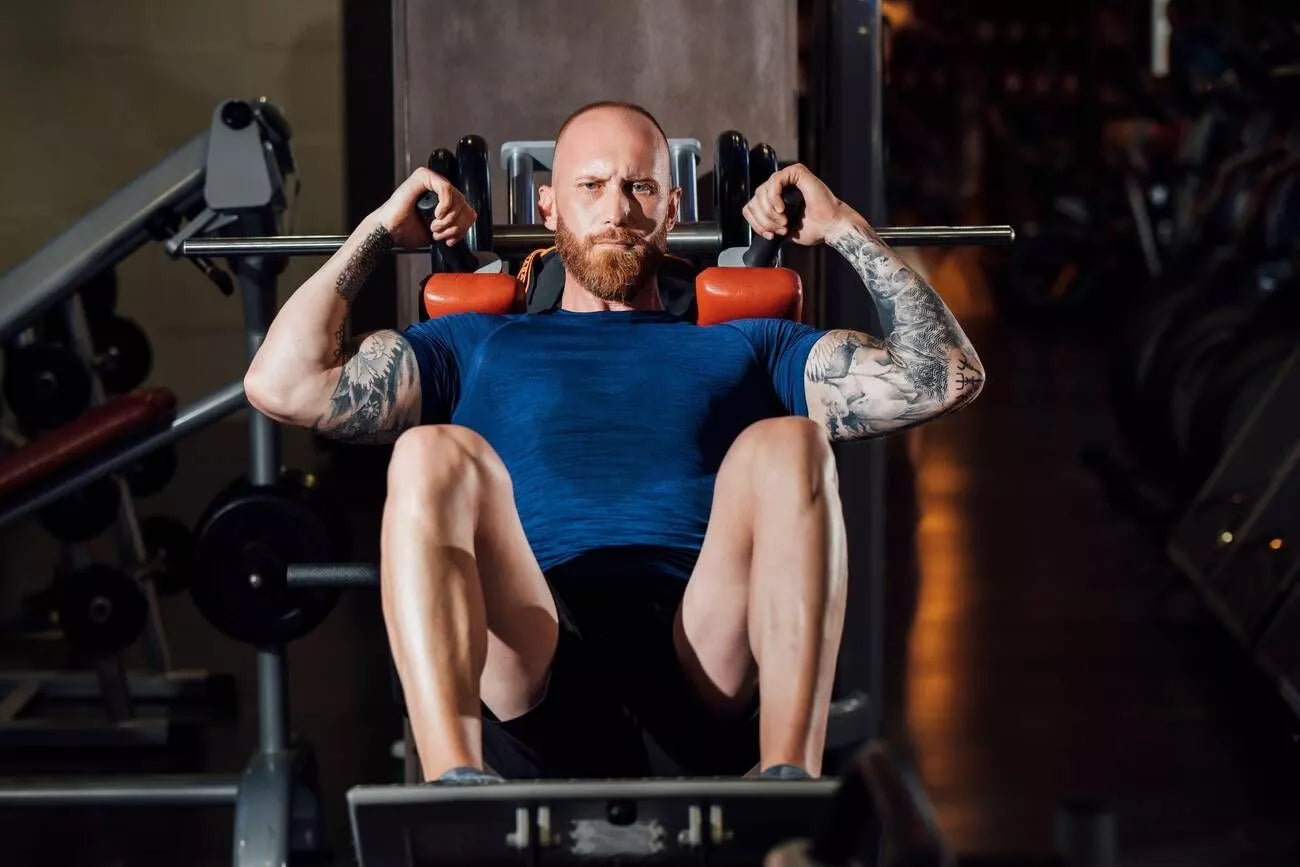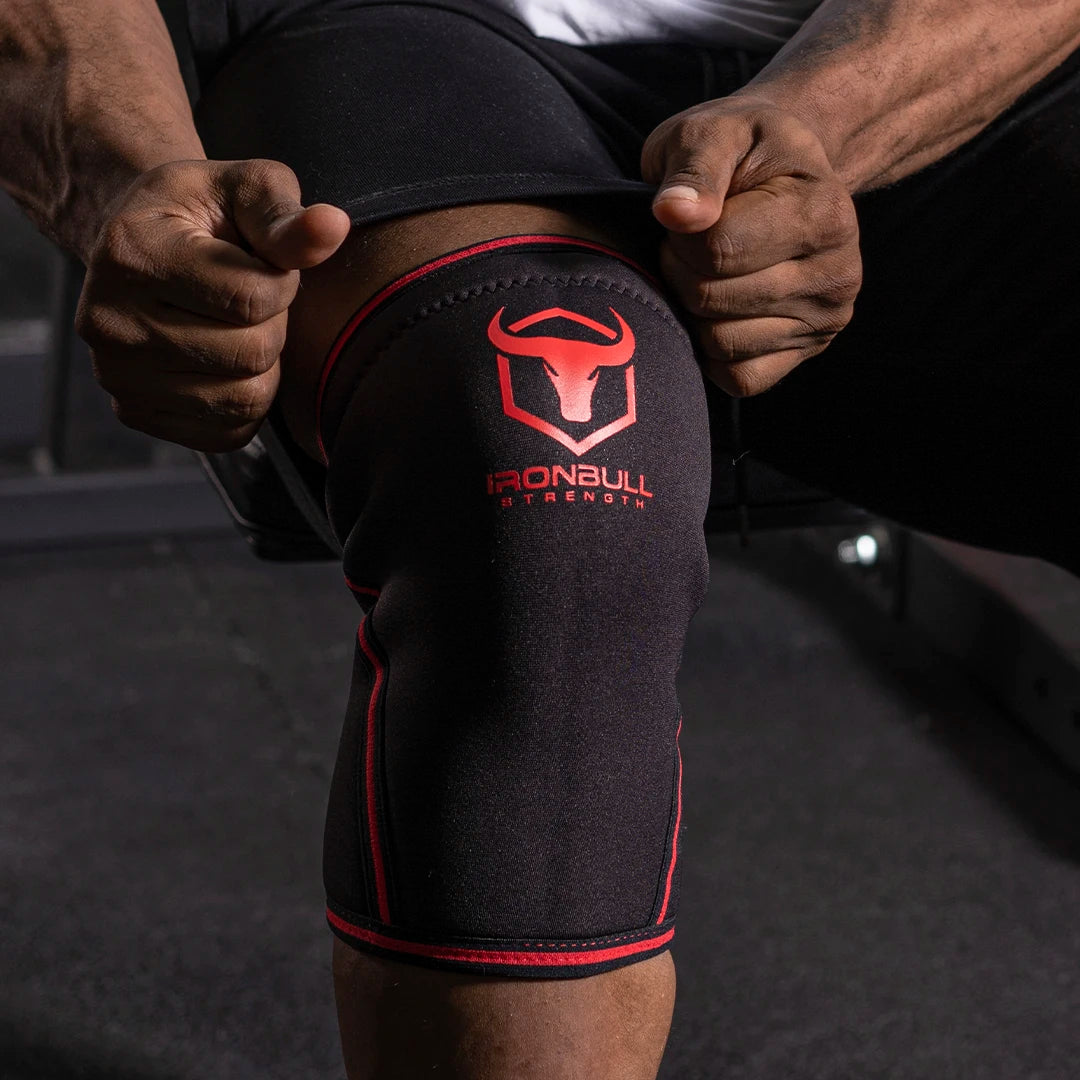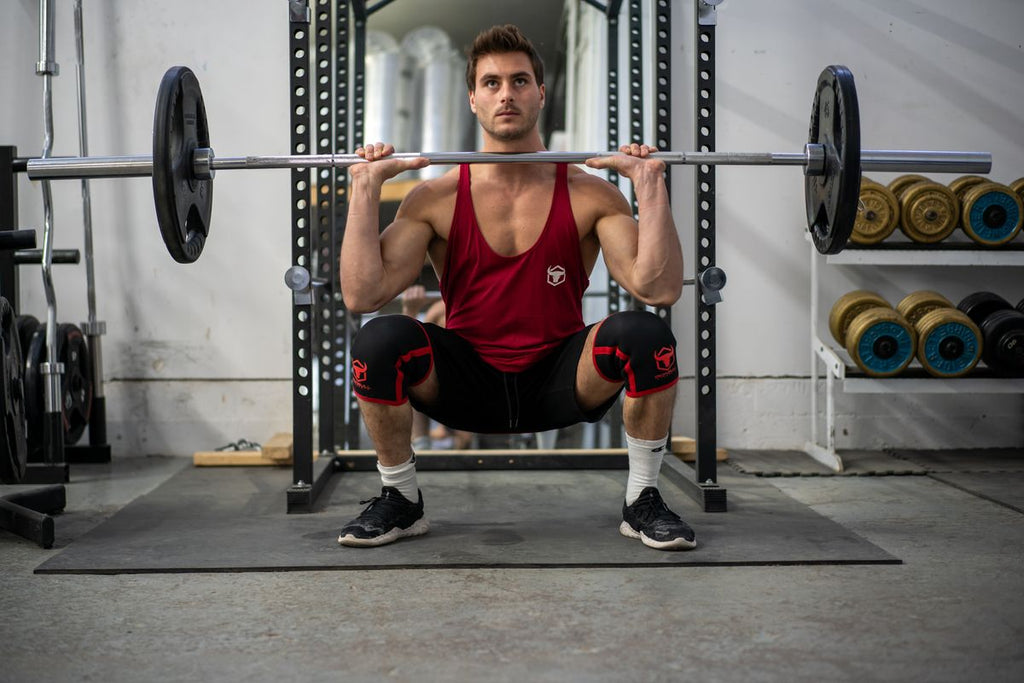V Squat vs Hack Squat: Which One Is Better?

What's A Hack Squat?
The hack squat is a lower body exercise performed on a hack squat machine. This machine typically features a large platform with shoulder pads and a footplate. The exercise involves bending your knees and lowering your body into a squatting position, then pushing through your heels to extend your knees and return to a standing position. The hack squat primarily targets the quadriceps, hamstrings, and glutes, making it an excellent exercise for building strength in these muscle groups. It also provides a more controlled movement compared to free weight squats, making it suitable for individuals who may have balance issues or mobility limitations.
How to do a hack squat?
A hack squat is a compound exercise that primarily targets the muscles in the lower body, specifically the quadriceps, glutes, and hamstrings. To perform a hack squat, start by positioning yourself on a hack squat machine or a barbell behind your legs. Place your feet shoulder-width apart, with toes slightly pointed outwards.
While gripping the handles or the barbell, lower your body down by flexing your knees and hips simultaneously. Keep your chest upright and back straight throughout the movement. Descend until your thighs are parallel to the ground or slightly below. Pause for a second at the bottom position, then push through your heels to extend your knees and hips, returning to the starting position. Repeat for the desired number of repetitions.
To optimize your hack squat experience, it is essential to maintain proper form and technique. Focus on contracting your quadriceps as you ascend from the bottom position, driving through your heels instead of your toes. This will help activate the targeted muscles effectively and minimize the strain on your joints. Additionally, ensure that your knees remain aligned with your toes throughout the movement to avoid unnecessary stress or discomfort.
To enhance the intensity or target different muscle areas, you can vary your foot positioning. Placing your feet closer together emphasizes your quadriceps, while a wider stance places more emphasis on your glutes and hamstrings. Experiment with different foot placements to find what feels most effective for your body. Regularly incorporating the hack squat into your lower body workout routine can contribute to building strength, muscle mass, and overall lower body stability.
Benefits of a Hack Squat And What Muscles Do They Work
During a hack squat, several muscles are engaged to perform the movement and support your body's stability. The primary muscles targeted in a hack squat are the quadriceps, located on the front of your thighs. These muscles, including the vastus lateralis, vastus medialis, and vastus intermedius, are responsible for extending your knees and straightening your legs. As you descend in the hack squat, the quadriceps are engaged to control the movement and generate force when pushing back up.
In addition to the quadriceps, the gluteal muscles, specifically the gluteus maximus, are also actively involved in the hack squat. These muscles, located in your buttocks, help extend your hips as you ascend from the bottom position. The involvement of the glutes contributes to overall lower body strength and stability.
Furthermore, the hamstrings, which are located at the back of your thighs, act as dynamic stabilizers during the hack squat. They assist in knee flexion and help control the movement on the descent, providing balance and support to prevent excessive stress on the knee joints.
Other secondary muscles that assist in the hack squat include the gastrocnemius and soleus muscles in the calves, which help with ankle plantarflexion, and the muscles of the core, such as the rectus abdominis, obliques, and erector spinae, which provide stability and balance throughout the movement. It is important to note that the specific muscles activated may vary slightly depending on individual differences and technique variations.
What's A V Squat?
The V squat, also known as the plate-loaded V squat or the V squat machine, is another variation of the squat exercise that targets the lower body muscles. This exercise is performed on a specialized machine that consists of a platform with a V-shaped frame, where weight plates are loaded. The V squat machine allows you to perform squats with a natural squatting motion, similar to a standing position. It targets the quadriceps, hamstrings, glutes, as well as the core and lower back muscles. The V squat provides a lower starting resistance compared to other squat variations, making it suitable for beginners and those with limited strength. It also offers reduced strain on the knees compared to regular squats, thanks to its comfortable range of motion.
How to do a v squat?
The V squat, also known as the sumo squat, is a variation of the traditional squat exercise that emphasizes targeting the inner thighs and glutes. To perform a V squat, stand with your feet wider than shoulder-width apart, toes pointed slightly outward. You can either hold a dumbbell or kettlebell with both hands at chest level, or keep your hands resting on your hips for balance. Engage your core, keep your chest lifted, and maintain a neutral spine throughout the movement.
To initiate the V squat, begin bending your knees and lowering your hips down towards the ground, ensuring that your knees track over your toes and do not collapse inward. Descend until your thighs are parallel to the ground, or as low as flexibility allows while maintaining proper form. At the bottom of the squat, engage your glutes and inner thighs, then push through your heels to extend your legs and return to the starting position. Focus on squeezing your glutes at the top of the movement. Repeat the V squat for the desired number of repetitions, paying attention to maintaining control and alignment throughout the exercise.
The V squat primarily targets the adductor muscles of the inner thighs, helping to improve leg strength, stability, and flexibility. Additionally, the gluteal muscles, including the gluteus maximus and gluteus medius, are actively engaged during the V squat, contributing to overall lower body strength. By widening your stance and turning your feet outward, you shift the focus to these specific muscle groups, helping to sculpt and tone the inner thighs and glutes. Incorporating V squats into your workout routine can be beneficial for athletes, fitness enthusiasts, and individuals looking to improve their lower body strength and aesthetics. Remember to start with lighter weights or no weight at all if you are new to the exercise, gradually increasing resistance as you become more comfortable and confident in your form and strength.
Benefits of a V Squat And What Muscles Do They Work
The V squat, also known as the sumo squat, is an effective exercise that targets multiple muscle groups in the lower body. One of the key muscle groups engaged during a V squat is the quadriceps. These muscles, located at the front of the thighs, are responsible for extending the knees and straightening the legs. As you lower your body into the V squat position, the quadriceps are activated, allowing you to control the descent and generate force during the ascent.
Additionally, the V squat primarily targets the adductor muscles, which are located on the inner thighs. These muscles, including the adductor longus, adductor brevis, and adductor magnus, play a vital role in hip adduction, or bringing your thighs towards the centerline of your body. By assuming a wide stance and turning your toes outward during the V squat, you place a significant emphasis on the adductor muscles. These muscles are essential for movements such as walking, running, and even lateral movements like side lunges. Strengthening the adductors through V squats can help improve overall leg stability and balance.
Moreover, the gluteal muscles, including the gluteus maximus and gluteus medius, are actively engaged in the V squat. These muscles, located in the buttocks, are responsible for hip extension, which occurs as you push through your heels to stand back up from the squat position. Strong glutes not only contribute to aesthetic appeal but also play a crucial role in lower body strength, power, and stability. By incorporating V squats into your workout routine, you can effectively target and strengthen these key lower body muscles, leading to improved athletic performance and functional movement capabilities.
Technique and Mobility Requirements
In terms of technique, both the hack squat and V squat require maintaining a neutral spine, engaging the core, and focusing on proper knee alignment. However, the hack squat requires a slightly different positioning, with the shoulders against shoulder pads and the feet on the footplate. The V squat, on the other hand, involves standing in the machine's platform and grasping the handles for stability. Using knee sleeves for squats during these exercises can offer additional support, ensuring that the knees remain protected and aligned correctly. In terms of mobility, the hack squat generally requires less mobility compared to free weight squats since the machine provides support and control. Nonetheless, ensuring adequate ankle and hip mobility is vital for maintaining proper form and range of motion in both exercises.
Injury Risks and Precautions
Both the hack squat and V squat come with their set of potential risks, particularly if executed with improper form or excessive weight. Starting with lighter weights and progressively increasing the load as you enhance your strength and technique is paramount. Incorporating knee sleeves can also help in minimizing the risk of knee injuries by providing added stability and support. Furthermore, a thorough warm-up and mobility exercises are indispensable to prime your muscles, joints, and connective tissues for the workout. If you're dealing with any pre-existing knee or lower back conditions, seeking advice from a healthcare professional or a fitness trainer before integrating these exercises into your regimen is recommended.
Conclusion
The hack squat and V squat are powerful exercises that effectively target the quadriceps, hamstrings, and glutes. While the hack squat offers a more controlled movement, the V squat provides a natural squatting motion and a lower starting resistance. Both exercises have their unique benefits, and the choice between them ultimately depends on your fitness goals, preferences, and any specific considerations such as injury history or mobility limitations. Remember to prioritize proper form, technique, and gradual progression to maximize the benefits of these exercises and reduce the risk of injury. Incorporating a combination of these exercises into your lower body training routine can help you achieve a well-rounded, strong, and powerful lower body.













